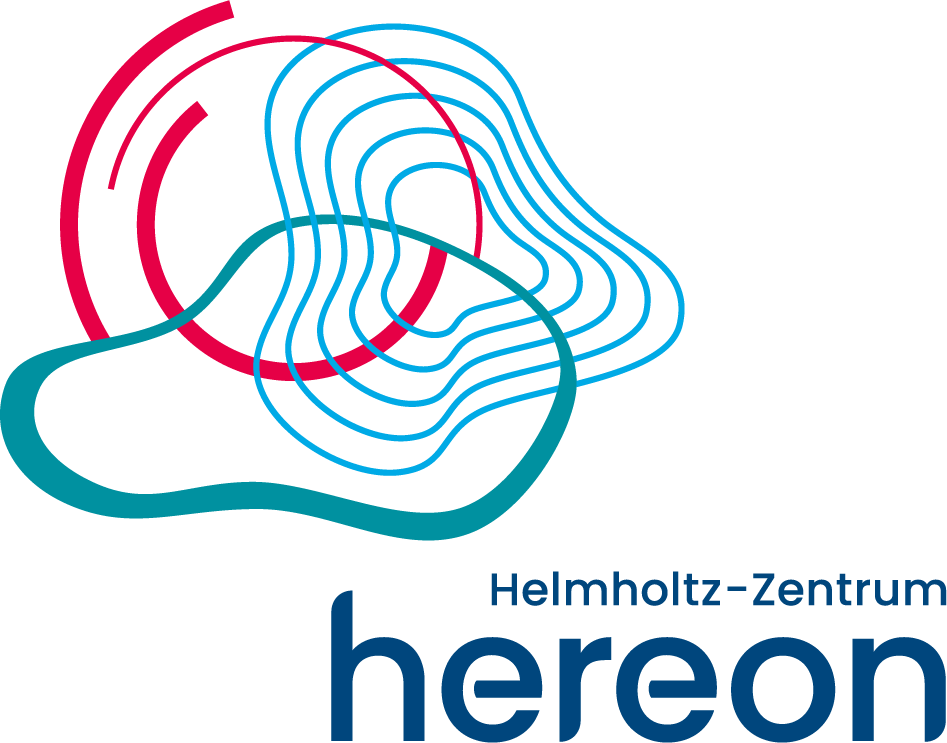MLZ is a cooperation between:
 > Technische Universität München
> Technische Universität München > Helmholtz-Zentrum Hereon
> Helmholtz-Zentrum Hereon
 > Forschungszentrum Jülich
> Forschungszentrum Jülich
MLZ is a member of:
 > LENS
> LENS > ERF-AISBL
> ERF-AISBL
MLZ on social media:

MLZ (eng)
Lichtenbergstr.1
85748 Garching
KWS-X: The SAXS/WAXS Laboratory Beamline
The customized small- and wide-angle X-ray scattering (SAXS/WAXS) instrument from XENOCS has been installed in the 45 m2 SAXS lab since the end of 2021. As one of the most powerful in-house SAXS instruments in the world, it offers highly complementary experimental capabilities to our SANS and other neutron instruments. The lab is also equipped with sample preparation tables, sample environment platforms, and various supporting facilities.
As a young member of our small-angle scattering instruments using X-ray as the beam, KWS-X is equipped with a high flux metal-jet source and a moveable Eiger 2R 4M SAXS detector. With an additional 4-axis motorized WAXS detector and Bonse-Hart USAXS, the scattering vector q can cover a wide area from 0.0002 to 7 Å-1. Compared to other instruments, it also comprises a large sample environment station that can be used with ambient pressure conditions. Many sample environmental accessories make it possible to perform experiments at temperatures from -150oC to 1000oC, under shear, tensile, etc.
The KWS-X SAXS-WAXS-USAXS beamline has been commissioned and officially opened to users in April 2023. In addition to being a complementary method to SANS, it will also provide users with testing services before experiments on neutron scattering instruments (SANS instruments KWS-1, KWS-2, KWS-3 and other neutron scattering instruments). This will greatly help users optimize neutron scattering samples and greatly improve the efficiency of SANS experiments. In addition, KWS-X can also use X-ray to debug large neutron sample environments.
X-ray source
• Excillum’s MetalJet D2+
• Ga anode 250W 70kV 3,57 mA 20×80 μm
• Flux
~2.45×109 ph/s Full beam model;
~ 6.16×108 ph/s High Flux (HF) model;
~ 8.09×107 ph/s High Resolution (HR);
~ 1.77×106 ph/s Ultra High Resolution (UHR)
Optics and Collimation
• FOX 3D Galium multilayer optics
• Slightly focusing optics
• Four motorized independent blades per set of slits (S1, S2 and S3)
• S1 + S3: Collimation length> 1.9 m (Sample chamber or BioCUBE)
• S1 + S2: Collimation length> 1.3 m (XL position)
SAXS Detector: Dectris Eiger2R 4M
• Pixel Size: 75× 5 µm²
• 4,5 Million pixels
• Sensitive Area: 155×163 [mm²]
• Modules (W x H): 2×4
• Countrate capability: 10⁷ ph/s/pixel
• Q-Xoom: in-vacuum moving detector
• Sample to detector distance > 1.8 m
WAXS Detector: Dectris Eiger2R 500K
• Pixel Size: 75 × 75 µm²
• 4-axis motorized WAXS for simultaneous 2D WAXS measurements
BONSE-HART USAXS
• Monochromator: 2-bounce Bartels Si(111)
• Analyzer: 4-bounce Si(111) channel cut crystals
Wide Q range
• SAXS: 0.0015 Å-1 < q < 5 Å-1
• USAXS: qmin < 0.0002 Å-1
• WAXS: qmax > 7 Å-1
High flux and lower background level
• Possible for time-resolved experiments in second level
• Allow low concentration samples
Three main measurement positions with maximum flexibility
• Sample chamber, BioCUBE and XL position
• Measurements in vacuum or in air
• Modular conversion of various settings
Sample chamber/BIOCUBE/XL
• Plenty of space for large sample environment.
In-line sample visualization
• 2xCCTV in-line camera + 3 overview camera + 1 endoscope
• Machine vision technology
Standard sample holders
• 27 positions 1.5 mm capillary holder
• 27 positions 2.0 mm capillary holder
• 25 positions Solids sample holder
• 61 positions Solids sample holder
• 15 positions powder/gel sample holder
• 8 positions powder/gel capsule sample holder (0.5 mm and 1 mm spacer)
Temperature controlled sample holders
• Multi-purpose Temperature Stage (-30 – +150°C)
• Multi-refillable capillary holder with temperature control (-10°C to +80°C)
• Linkam temperature stage MFS350 (capillaries & flat cells, -150 to +350°C)
• Linkam extended high temperature sample stage (RT to 1000°C)
Flow cells
• Low Noise flow cell (SiN windows)
• Glass capllary flow cell (ID from 1 mm to 4 mm)
• Polyconbonate capllary flow cells (ID 2 mm)
• BioCUBE flow cell Assembly & cleaning pump system & HPLC connection
Shear and Rheo-SAXS
• Linkam Shear Cell System (-50 to 350°C)
• Anton paar Rheometer- Polyconbonate double cylinder shearing system
Tensile
• Linkam Modular Force Stage
Surface and interface
• Standard and advanced GISAXS/GIWAXS module
Humidity control
• Xenocs Humidity control and generator (1 RH% to 95 RH%)
Magnetic field
• Permanent magnet (Halbach) arrays > 0.6 T
UV/Vis
• In-line UV/Vis spectrometer for BioCUBE
pH control
• Metrohm Trtrtion system and reaction cell, pH-counter ion control system
BIOSAXS system
• BioXolver and Cart for auto sample loading robot plus capillary flow cells
SEC-SAXS
• In line SEC-SAXS set up by conbination of a HPLC system and the BioCUBE flow cell.
Add-ons
• Linkam T96 controller and Lquid Nitrogen pump
• XL Large sample environment station, capacity > 100 kg
• Additional rotation capability for the XL- XZ table
• mT Jumping and stopped flow/ UV-Vis/ Fluorescence
More sample environments from our neutron instrument can be shared with our neutron sample environments. Users can also bring their own sample environment.
Lab Equipments
• MIG-O-MAT Lötstar 141: Micro Soldering and Welding Unit for capillary sealing
• Julabo F25-HE refrigerated circulator
• IKA VORTEX 3 and accessories
• Reglo ICC Digital Peristaltic Pump
• Micro Hämatokrit (capillary) centrifuge
• Laboratory refrigerator
• Variomag Mini Stirrer
• PC 3001 VARIOproVARIO chemistry pumping unit
• Metrohm pH Meter 913
• IKA magnetic stirrer with heating
• Emag 12 HC Ultraschallreiniger 100 W 1.2 l
• PCE-BT 200 precision scale weighing 0.001g- 210 g (max.)
Life and medical science
• Structure and interactions of protein, nucleic acid
• In-situ monitoring of protein conformational changes, protein aggregation
• Characterizing monoclonal antibody-protein antigen interactions
• Hierarchical structures of biomaterials, e.g. collagen, chitosan
• Drug delivery systems based on nanoparticles, vesicles or liposomes
Polymer and soft matter
• Structure of polymers, colloids, hydrogels, surfactants and micellers
• In-situ crystallisation of semi-crystalline polymer
• Determine the phase of self-assembled block-copolymers or liquid crystalline polymers
• Test the tensile properties of polymer or follow the degree of crystallinity
• Microemulsions, complex fluids …
• Colloids, nanocomposites, polymer gels …
Material science
• Structure of fibre, membranes, thin films and nanocomsposites …
• Aerogels, silica foams, coating
• Micro and mesoporous materials, cements, metal and alloys
• Crystal formation during perovskite deposition and other energy materials
Food science
• Monitor the size, shape and stability of fat globules in dairy upon aging, drying and digestion
• Crystalline fraction and lamellar structure in starchy
• Structure and size of polysaccharides and proteins in hydrated systems
• Oleo-gelator network
The KWS-X SAXS-WAXS beamline invites applications from universities, research institutes, and industries worldwide. There are currently three ways to apply:
• Via MLZ Neutron Scattering Proposal: When submitting a neutron scattering beamtime proposal through the MLZ system, you can also apply to use the KWS-X SAXS-WAXS beamline as an additional method in the Ghost system. If your neutron proposal is accepted and there are no technical issues, your KWS-X application will also be approved.
• Direct Application Through Collaboration: You may apply directly for KWS-X beam time in collaboration. It is recommended to consult with the instrument manager before applying. Once approved, the experiment can be conducted remotely by mailing samples or performed on-site.
• For Industrial Users: Industrial users are welcome to contact us directly to apply for access to the instruments.
Contact
Dr. Baohu Wu (Head)
Email: ba.wu@fz-juelich.de
Phone: +49 (0)89 158860-687
Dr. Avanish Bharati
Email: a.bharati@fz-juelich.de
Telefon: +49 (0)89 158860-640
SAXS Labor (KWS-X, UYL 122)
Phone: +49 (0)89 158860-122
KWS-X: The new SAXS/WAXS Laboratory Beamline
Gallery

















MLZ is a cooperation between:
 > Technische Universität München
> Technische Universität München > Helmholtz-Zentrum Hereon
> Helmholtz-Zentrum Hereon
 > Forschungszentrum Jülich
> Forschungszentrum Jülich
MLZ is a member of:
 > LENS
> LENS > ERF-AISBL
> ERF-AISBL
MLZ on social media:




